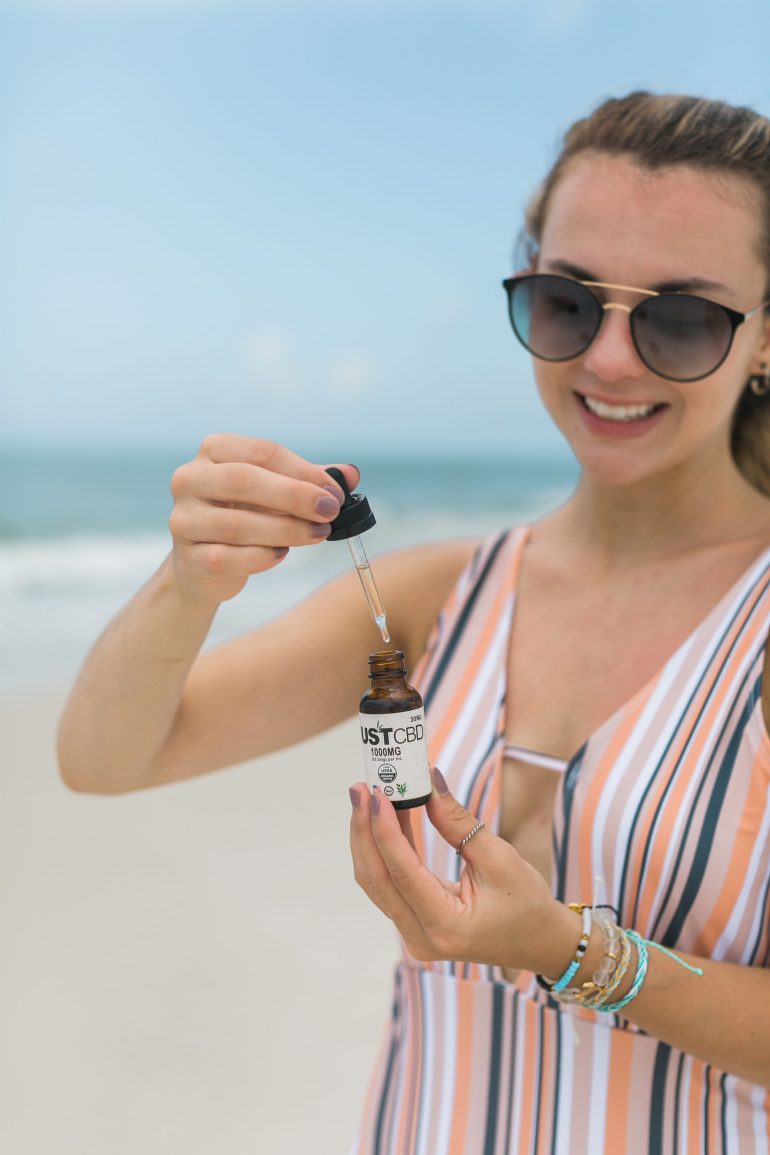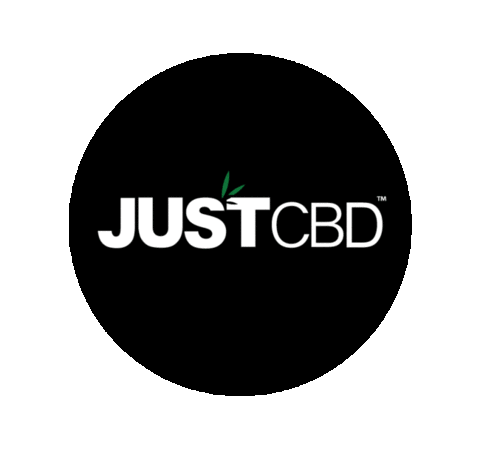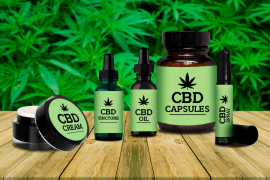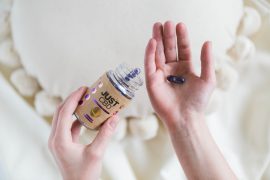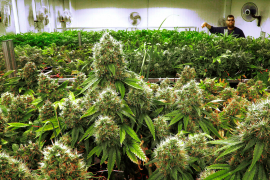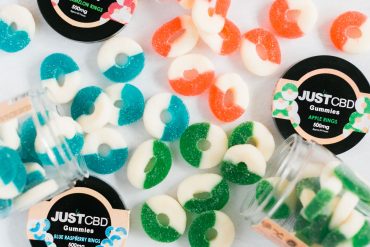What Are CBD Tinctures?
Scientifically speaking, a tincture is an herbal medicine concentration that is in an alcohol solution. Leaves, roots, herbs, and various plants are soaked in an alcohol solution, after which the plant matter is strained and the remaining liquid is bottled and labeled as a tincture. In a CBD tincture, the solvent (alcohol) is infused with the hemp flowers or isolates (CBD in its purest extracted form) and exposed to heat, much in the same way we steep loose-leaf tea. As the mixture steeps, the majority of the alcohol evaporates. The remaining mixture is then strained and is flavored or enhanced with other herbs, essential oils, or other agents. It’s bottled in an eye-dropper and sold for consumer use. The tincture comprises all of the cannabinoids, flavonoids, and terpenes from the plant without the plant needing to be in the solution. Common additives include flavouring, vitamins or minerals, sweeteners, herbs, etc.

What’s The Difference Between CBD Tinctures And CBD Oils?
Tinctures
As explained above, CBD tinctures are hemp infusions made with an alcohol base. Prior to bottling, other items like flavourings and sweeteners are added which enhance the palatability and efficacy of the tincture. For example, a CBD tincture made for sleep may also contain lavender essential oil and melatonin. This is an important point to keep in mind if you have any allergies or special dietary concerns. Always read the label! Tinctures are also absorbed into the body faster than CBD oil thanks to the rate at which alcohol is absorbed into the body. Scientists refer to this as bioavailability. Essentially, the CBD and contents in the tincture are more readily available to our metabolism thanks to the alcohol.
Oils
CBD oils usually include only two ingredients: the CBD extraction and the carrier oil. The most popular carrier oils used are MCT oil, vegetable glycerine, hemp seed oil, and coconut oil, however there are plenty of other oils used and each one will have a unique flavor profile. Because CBD oil has no additional ingredients, it tends to be more potent than a tincture, however you should always read the dosage information to ensure you’re taking the correct amount. CBD oil is also great for topical use and can be used to treat aches and pains, itchy skin, or burns without additional risk of irritation since there are no other ingredients. Finally, CBD oil (including full spectrum cbd) is great for use in cooking and baking as it is fat soluble and can be added in with butter, oil, shortening, etc.

Do CBD Tinctures Get You High?
Just like with the CBD Gummies, CBD tincture will not cause a high or any psychoactive effects. CBD tinctures only contain CBD and not THC, the cannabinoid responsible for the mind-altering effects of cannabis. As discussed in the previous section on CBD Gummies, while there may be trace amounts of THC in CBD products, it’s negligible and must remain under 0.03% in order for it to be legal in the US. This amount of THC will not cause any euphoric effects. So while THC can cause impairment and cognitive issues, CBD does not and actually counteracts the effects of THC as CBD binds to the CB1 receptor and is classified as a CB1 antagonist.
How Do You Use CBD Tinctures?
There is a wide array of CBD tinctures on the market so always read the directions on the bottle before purchasing to ensure you can use it the way it will most benefit you. Generally speaking, tinctures are taken orally and sublingually, meaning under the tongue.
One of the greatest things about CBD tinctures is that they can be added to a variety of items for oral ingestion. Things to always consider prior to taking your tincture:
- Always shake the tincture well to mix the solution.
- Read the label to determine the dosage – tinctures are often sold in eyedropper bottles that have 1mL droppers. The amount of CBD will depend on brand and purpose of the tincture, so be sure to check your bottle to see how many mg of CBD there are per mL of tincture.
Oral Application
Now that you’re ready to take your tincture, here are some ways you can take it orally:
- Add your tincture to your morning coffee. Some people find that CBD can make them so relaxed that they experience drowsiness. Adding your tincture to your morning joe can offset this rare side-effect. Coffee is also a nice strong flavor that can mask the taste of the tincture if you’re not a fan of it. To really improve the effect of your tincture, add heavy cream or MCT oil to your coffee to help with the binding process. Remember, CBD is fat soluble.
- Add your tincture to your tea. While coffee can help give you a boost, if you’re looking for more relaxation, you can add it to any number of caffeine free herbal teas for added benefits and health effects. Adding your CBD tincture to chamomile tea is a great nighttime routine.
- Add your tincture to your daily smoothie. Your smoothie is already a great healthy routine helping your immune system and body function its best. Adding your dosage of CBD tincture to your daily smoothie is a great way to give yourself a boost.
- Add your tincture to your snacks like hummus, guacamole, yogurt, or salad for a quick dose of CBD benefits. Make sure you’re mixing your CBD tincture into your food well and enjoy.
Sublingual Application
Sublingual application is a very quick and easy method to take your CBD tincture. Sublingual application means taking your dose of CBD tincture under your tongue, which is faster acting than ingesting as it skips the digestion process. In order to take your tincture sublingually, squirt your dosage under your tongue and let it sit there for approximately one minute before swallowing. Letting it sit is imperative as it gives your vessels time to absorb the CBD. Your CBD will take effect within minutes and will last a couple of hours.

How Long Do CBD Tincture Effects Last?
As a general rule, the faster the effects take place, the faster the effects will end. There is no real hard and fast rule for the effects of CBD as it depends on several factors. Biological factors such as gender, weight, and metabolism will affect the way your body reacts to CBD and how long it remains in your body. Additionally, you have to consider potency, dosage, and method of ingestion when considering the length of time the CBD will remain active. For example, CBD tinctures taken sublingually will leave the body faster than CBD tinctures taken orally. Taking CBD tincture sublingually will have an almost immediate effect, though for some people it can take up to an hour. The effects will remain for anywhere between 2 to 6 hours due to the factors mentioned above. Taking the CBD tincture orally will delay the effect to approximately 90 minutes before you feel results, and will likely last at the higher end of 2 to 6 hours.
As far as how long CBD will remain in your system without the acute effects, scientists primarily agree on anywhere between 3-5 days. As mentioned previously, CBD is fat soluble, meaning it’s stored in our fat cells. This is why your weight and gender can greatly affect the results of CBD. In general, the faster your metabolism, the faster the CBD will pass through your body. Additionally, if you are a regular user of CBD, this will create a build-up in your system and the CBD will remain in your system longer. This is not anything to worry about as CBD is non-addictive and safe.
What To Look For When Buying CBD Oil Tinctures?
Like with any CBD product, it is always important to ensure you’re purchasing a high quality product from a reputable source. The CBD market is booming right now in what’s being dubbed the “green rush” and many people are trying to cash-in on the trend. There are a couple really easy things to watch out for when purchasing CBD tinctures for a positive experience.
Third Party Testing
Any product that contains CBD should have third party testing certificates available for two main reasons: first, you should be able to see that the product is either THC free or what’s called ND-THC (Non-Detectable THC), which means it contains <0.03% THC. Second, this ensures that what you’re buying is actually CBD and not something else. If they do not offer a third-party testing certificate, think twice about purchasing from them.
Batch Number and Testing
Your tincture should be clearly marked with a batch number in the event a recall needs to be made. CBD tinctures are legally required to be marketed as dietary supplements, meaning in order to comply with the FDA, there needs to be a batch number detectable for user safety. The batch number is also linked to their third-party reporting.
Curative Claims
Despite the mounting research that shows the efficacy of CBD in treating many illnesses and symptoms, according to federal law, companies are not able to make curative claims. If a company does make such claims on their product, they are violating the law and may also cut corners elsewhere. We might all know the use and healing properties of CBD and CBD tinctures, however for now, we are unable to definitively state them.
Instructions and Dosage
As mentioned, the potency of CBD tinctures can vary greatly so it is important to look at the dosing and percentage of CBD in the product. As we know, CBD effects can vary between individuals, so knowing how much CBD each vial contains will help you reap the benefits of the product and not waste your money on over-dosing or under-dosing.

Will My Insurance Cover CBD Oil Tinctures?
Unfortunately at this time there is no coverage for CBD tinctures under US insurance companies. Due to ongoing stigma and fears of addiction (despite evidence to the contrary), CBD is not labelled as a medication and cannot be covered by third-party insurances. CBD tincture falls under the USFDA jurisdiction and is classified as a dietary supplement, rather than a drug capable of treating ailments. With the ongoing efforts to decriminalize and legalize cannabis, more research will come to light and hopefully the wheels in motion today will eventually lead to better recognition of the plant and products as medical treatment and safe to use. The USFDA has very little incentive to recognize CBD as a viable drug treatment option not only because of its history of steering clear from natural products, but also because cannabis itself is still classified as a Schedule 1 Controlled Substance in the United States.
- A new survey reveals – the pandemic has increased CBD use - March 30, 2021
- Epidemic of insomnia sees JustCBD formulate sleep-specific CBD gummies - March 18, 2021
- UK-based hedge fund acquires celebrity fashion brand Dimepiece in $50 million deal - March 18, 2021

